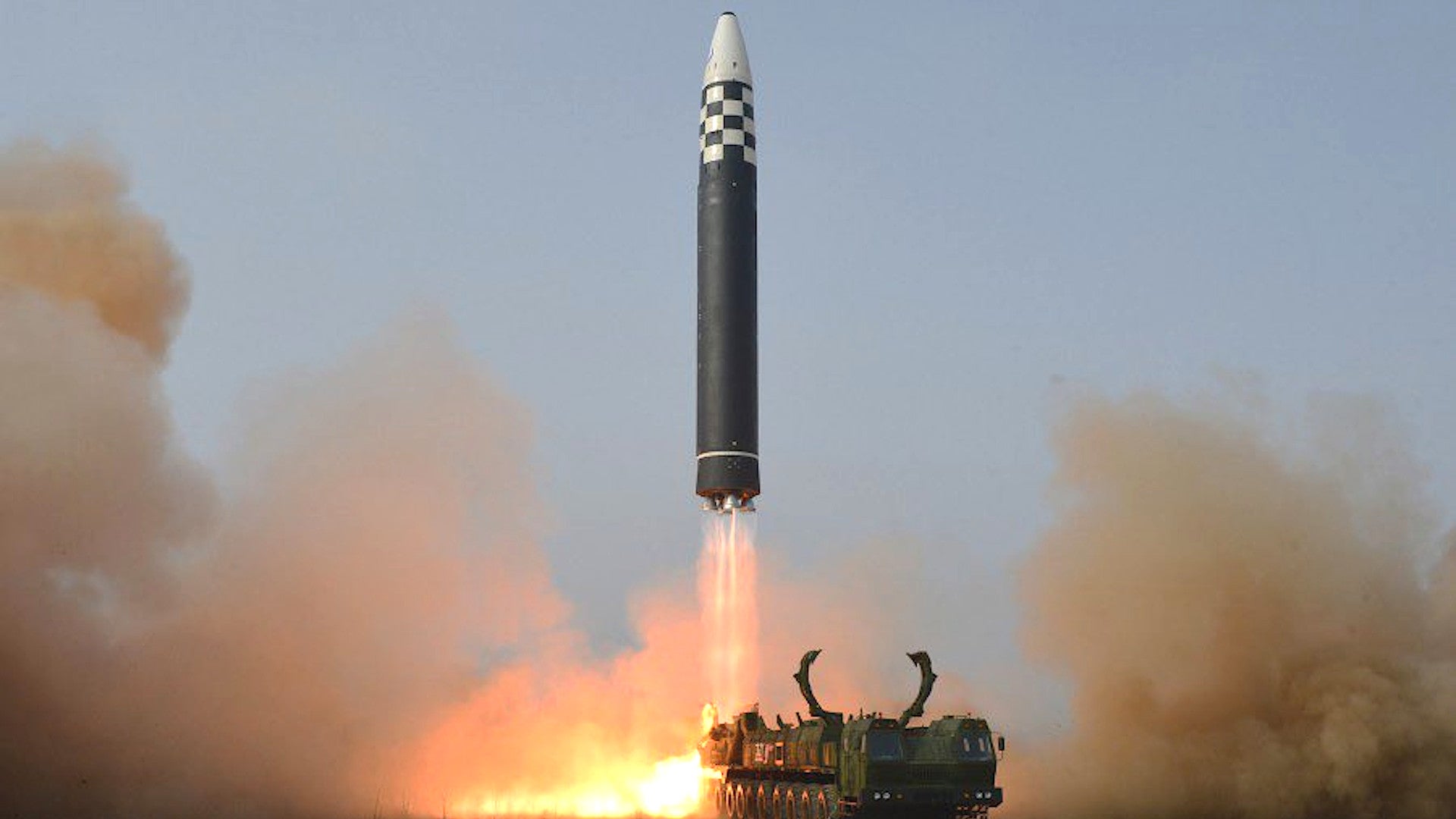North Korea claims to have successfully test-launched a new “super-large” nuclear-capable intercontinental ballistic missile, or ICBM, called the Hwasongpho-17. This is North Korea’s largest ICBM design to date and this test saw the missile reach an especially high altitude, with the country’s authorities saying it reached a height of 6,248.5 kilometers, or nearly 3,882 miles, before falling into a part of the East Sea within Japan’s Exclusive Economic Zone, or EEZ. This is North Korea’s first known ICBM test since 2017, a highly provocative act, although one many had predicted was relatively imminent based on Pyonyang’s escalating missile tests and rhetoric towards the U.S. and its regional allies.
The launch, which North Korean leader Kim Jong Un attended, took place on Thursday, March 24, 2022, which is now yesterday on the Korean Peninsula. A statement put out through North Korea’s state media apparatus included the official recorded height the missile reached and said that it had traveled a lateral distance of 1,090 kilometers, or just over 677 miles, over the course of a flight lasting 4,052 seconds, or 67.5 minutes. These figures are fully in line with the estimates that South Korean and Japanese authorities had put out earlier.

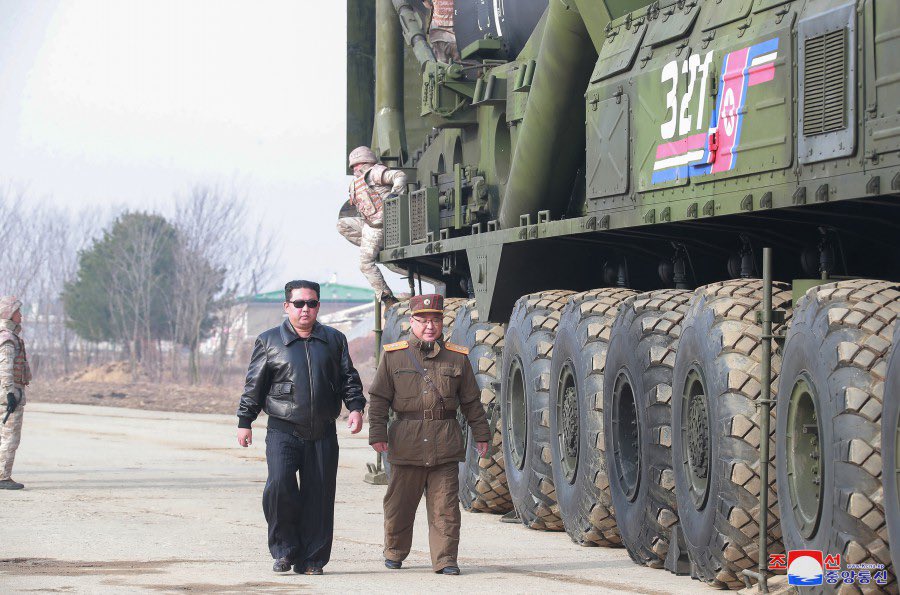
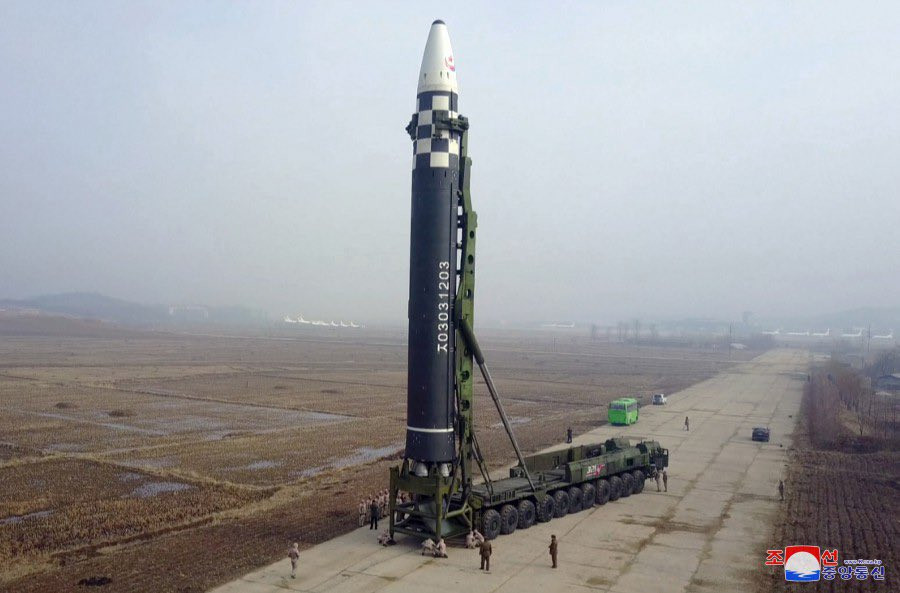
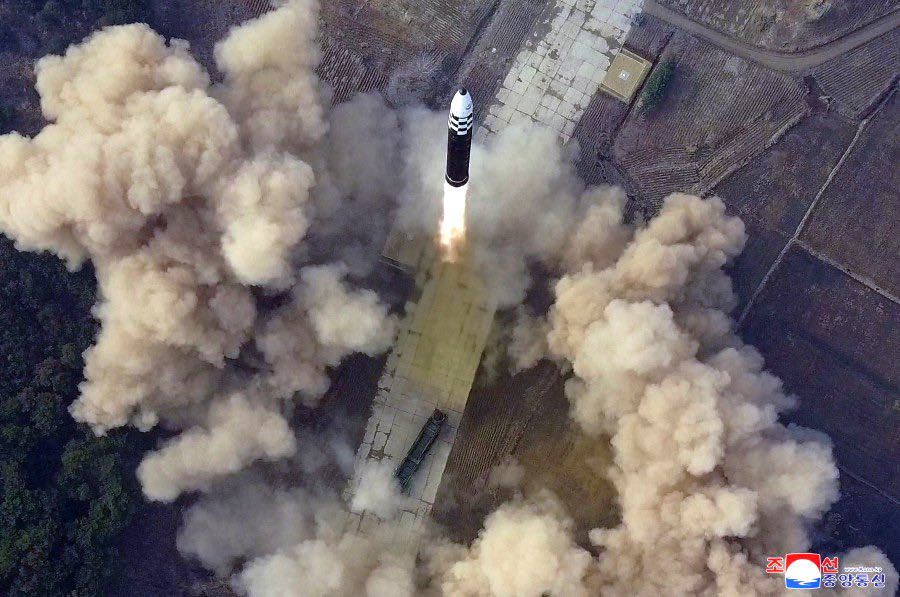


The North Korean statement did not provide specifics on where the missile impacted, beyond saying it had succeeded in “correctly hitting the target” in the East Sea. “The intercontinental ballistic missile was test-fired vertically in consideration of the security of the neighboring states,” it added.
Japanese authorities said the missile landed inside the country’s Exclusive Economic Zone in the East Sea. At least one Japanese F-15J Eagle fighter jet was scrambled in response to the launch, along with a P-3C Orion maritime patrol plane. The Japanese Ministry of Defense subsequently released a video, seen below, shot from an F-15J cockpit showing the missile rising.
“This is such an outrageous, unforgivable act,” Japan’s Prime Minister Fumio Kishida, adding that the launch was “reckless” and “unacceptable.” South Korean, American, and United Nations officials also denounced the test, which violates a number of U.N. Security Council Resolutions.
South Korea reacted to the test with snap missile drills.
Details about the Hwasongpho-17 itself are limited, but it appears to be derived from the earlier Hwasong-15 design and may be known within the U.S. military as the KN-28. Ankit Panda, a Stanton Senior Fellow at the Carnegie Endowment for International Peace and an expert on North Korea’s nuclear weapons and missile program, suggested that the first stage of the missile could put out 160 tons of force based on the size and arrangement of the rocket motors, underscoring the design’s significant apparent range as demonstrated by this high altitude test.
The Hwasongpho-17 is believed to be a two-stage, liquid-fueled design with an estimated overall length of 26 meters, or just over 85 feet, and a diameter of 2.7 meters, or nearly 9 feet. Its size and design, at least from what can be seen outwardly, raise the possibility that it might be able to carry more than one nuclear warhead in a multiple independently-targetable reentry vehicle (MIRV) configuration. In terms of performance, one would imagine that it at least, if not more capable as the previous Hwasong-15, which can reach the United States, among other parts of the world.
The missile, or at least a mockup thereof, first appeared publicly at a parade in 2020, along with its new 11-axle transporter-erector-launcher (TEL). Its name first emerged at a weapons expo in the North Korean capital Pyongyang last year.

It’s unclear how many times North Korea has attempted to test the missile or components thereof. South Korean authorities said that North Korea tried, but failed to test a missile last week. North Korea did not even acknowledge that launch publicly, which is not uncommon after unsuccessful tests. Though we have no way of knowing whether that was also a Hwasongpho-17 test, failures during the development of new missile designs, especially large and complex types like ICBMs, are hardly uncommon.
In addition, North Korea carried out two other test launches on February 27 and March 5 of this year, which it described as being part of the development of “reconnaissance satellites.” U.S. officials disputed this and subsequently announced new sanctions in response to what it said were ballistic missile tests. American authorities have accused North Korea, as well as Iran, of leveraging work on space launch rockets of various types to support very long-range ballistic missile development efforts in the past.
Whatever the case, the Hwasongpho-17 follows a string of North Korean tests involving previously unseen hypersonic, ballistic, and cruise missiles of various types since last fall. The test of this particular weapon is clearly intended to signal the country’s growing strategic deterrence capabilities, including challenging any remaining doubts about its ability to directly threaten the United States.
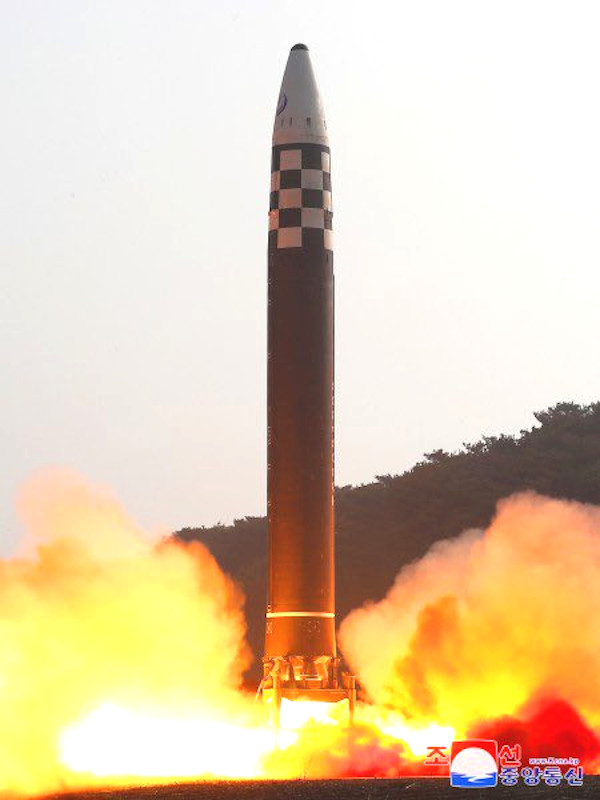
“Steadfast are the strategic choice and determination of our Party and government to strengthen the powerful nuclear war deterrent both in quality and quantity and in a sustainable way for the security of the country and to cope with all crises in the future,” the official North Korean statement says. “Possessing the incomparably overwhelming military offensive ability is the most reliable war deterrent, state defense capability.”
This all comes amid a deadlock in negotiations between Washington and Pyongyang over the future of North Korea’s nuclear and ballistic missile arsenals, among other issues. These talks are the continuation of diplomatic efforts that began under President Donald Trump’s administration, but that had largely stalled out already before he left office.
This test of the Hwasongpho-17, which has already been roundly condemned, would seem unlikely to jumpstart those talks and could easily provoke new sanctions, among other responses, from the United States and others. Earlier this month, satellite images showed the first new construction in years at North Korea’s nuclear test site at Punggye-ri, which the country’s regime claimed to have rendered unusable in 2018, another worrisome development.
At the same time, the North Koreans have certainly demonstrated yet another new and significant capability they are developing to hold their enemies around the world at risk.

Update 3/25/2022:
Experts have raised questions about North Korea’s claimed launch of a Hwasongpho-17 intercontinental ballistic missile after noting discrepancies between the footage broadcast on the country’s state television network and satellite imagery of the launch site. Whether or not this might mean that North Koreans tested something else and then released videos and pictures from a previous Hwasongpho-17 test, possibly tied to the reportedly unsuccessful launch on March 16, is unclear.
You can watch the footage North Korean authorities released regarding the launch in full below.

It’s worth noting that initial reports from South Korean media outlets after the launch yesterday said authorities in that country had looked into the possibility that the North Koreans had test-launched a Hwasong-15 ICBM with changes made to reduce its weight and increase its thrust to extend its flight time.
Contact the author: joe@thedrive.com
